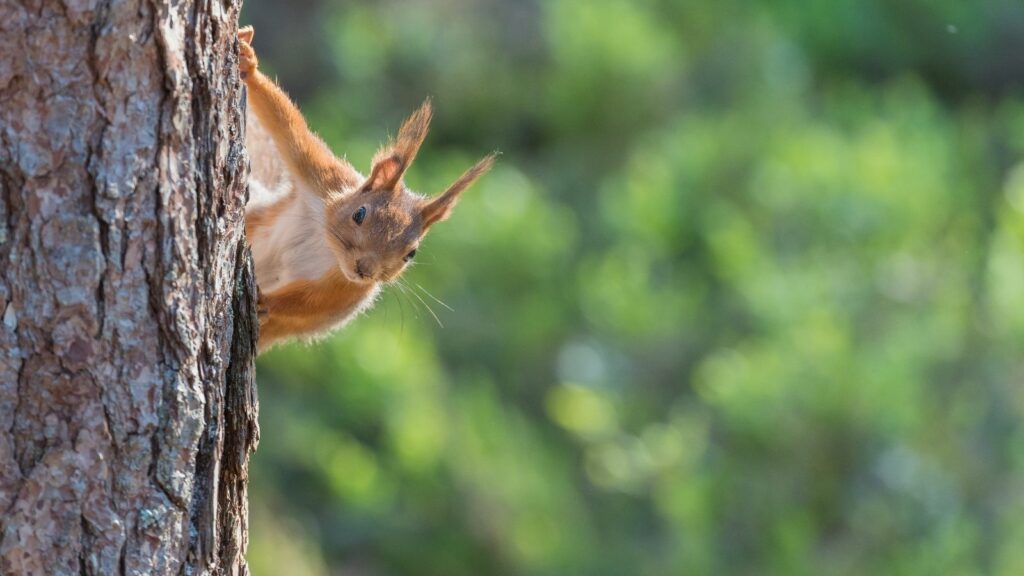Invasive species are notoriously challenging to track due to their ability to rapidly spread from one habitat to another, whilst their impacts on endangered species can be even more difficult to detect. Two new studies published in the journal Current Biology have now shown that it is possible to accurately identify a variety of animal species over distances of hundreds of metres by sampling environmental DNA (eDNA), or DNA traces shed by animals into the surrounding air.
eDNA extraction
The studies were authored by two independent groups of researchers: one based in Denmark, the other based across the UK and Canada. Each research team collected air samples from zoos, then used different methods to filter the air for eDNA extraction.
Species detection
Both teams succeeded in detecting the presence of animal species well beyond the confines of the two zoos. In the UK, 25 animal species were identified, 17 of which were zoo animals. Other species included livestock animals used as food in the zoos such as chicken and cow, and the endangered Eurasian hedgehog, which was living in the wild outside the zoo. The UK research team even managed to collect eDNA from outside sealed buildings, showing the power of this technology in detecting trace amounts of eDNA.
The team in Denmark managed to detect 49 species from just 40 air samples. The researchers identified many zoo species spanning mammals, birds, amphibians, reptiles and fish, as well as wild species living in the natural habitat surrounding the zoo such as the water vole and red squirrel.

© Sylvia_Adams at Getty Images Pro
eDNA – potential new technique
This technology could prove to be a valuable tool for global conservation and biomonitoring of endangered as well as invasive species. Sampling waterborne eDNA is already an established technique to monitor aquatic species, however, the risk of contamination of airborne DNA is comparatively higher, as particles can move more freely through the air than in water. To check that the zoo air samples had not been contaminated, the researchers sampled eDNA from air in their lab.
For a novel technique such as this, replication of the work is essential to gauge its potential future utility. The two research groups remained unaware of their parallel interests until they found preprints of the other’s work online, and although different sampling methods were used in each study, each team produced very similar results. The complementary nature of these studies makes a compelling case for airborne eDNA as a promising new technique for future animal conservation and biomonitoring.

However, as with any nascent field of research, a host of uncertainties exist, such as how long a species has to live in a habitat for their DNA to be detected, and how quickly airborne eDNA degrades in different climates. If eDNA sampling is shown to be a workable technique in natural habitats, researchers expect it to supplement rather than supersede traditional methods of biodiversity monitoring.
Despite these caveats, there remains a distinct possibility that airborne eDNA could revolutionise the fields of animal conservation and invasive species monitoring.
References
- ‘Measuring biodiversity from DNA in the air’ Elizabeth L. Clare, Chloe K. Economou, Frances J. Bennett, Caitlin E. Dyer, Katherine Adams, Benjamin McRobie, Rosie Drinkwater, Joanne E. Littlefair Current Biology (2021). DOI: 10.1016/j.cub.2021.11.064
- ‘Airborne environmental DNA for terrestrial vertebrate community monitoring’ Christina Lynggaard, Mads Frost Bertelsen, Casper V. Jensen, Matthew S. Johnson, Tobias Guldberg Frøslev, Morten Tange Olsen and Kristine Bohmann Current Biology (2021). DOI: 10.1016/j.cub.2021.12.014
Further Reading
Related News & Blogs
Biological control in action: Zambia’s field days on fighting fall armyworm
Experts from CABI recently held two field days and an expo in Zambia, showcasing innovative approaches to pest management to 584 farmers, agro-dealers and other stakeholders to help raise awareness of approaches to tackle the invasive fall armyworm (Sp…
11 June 2025




